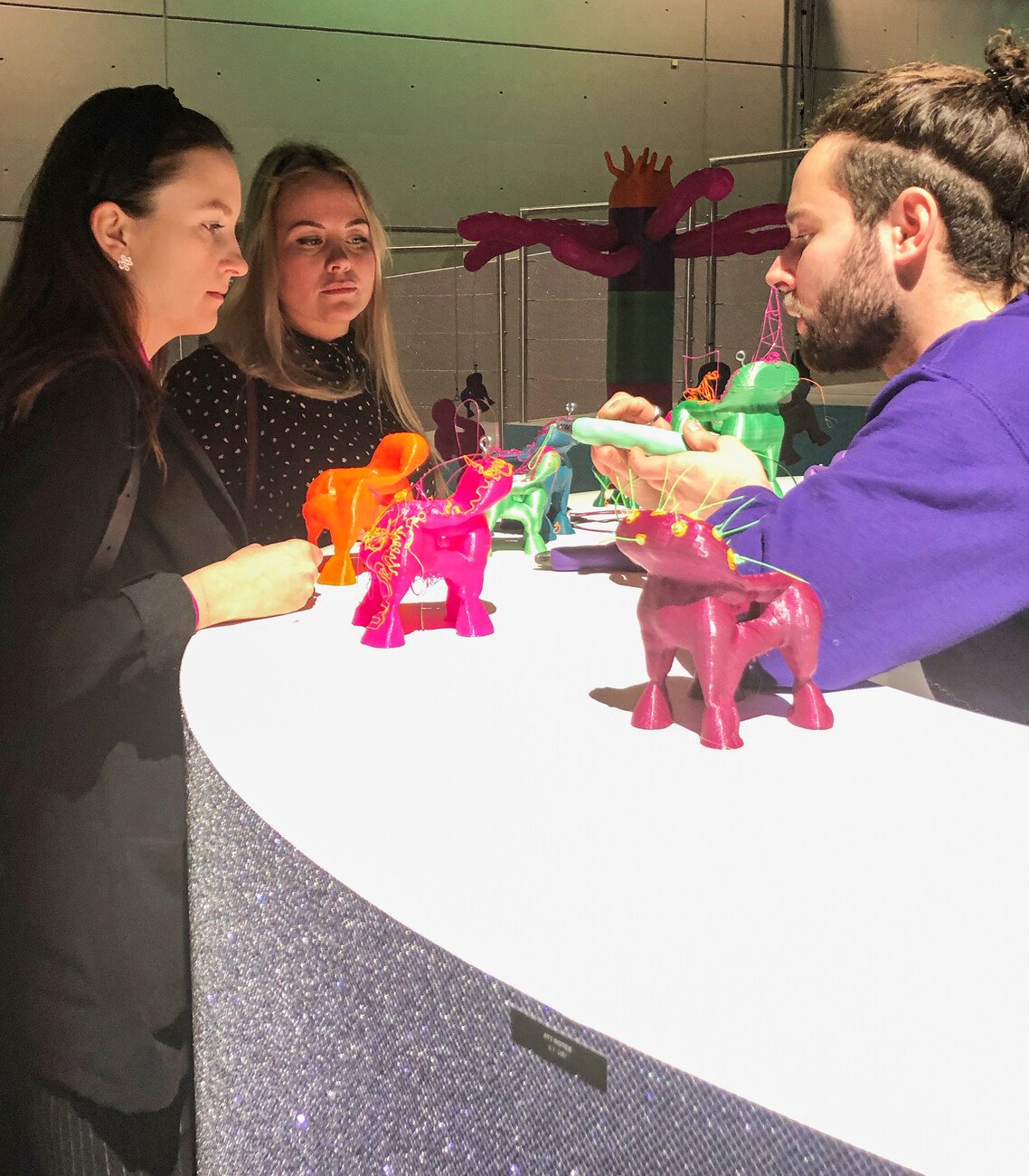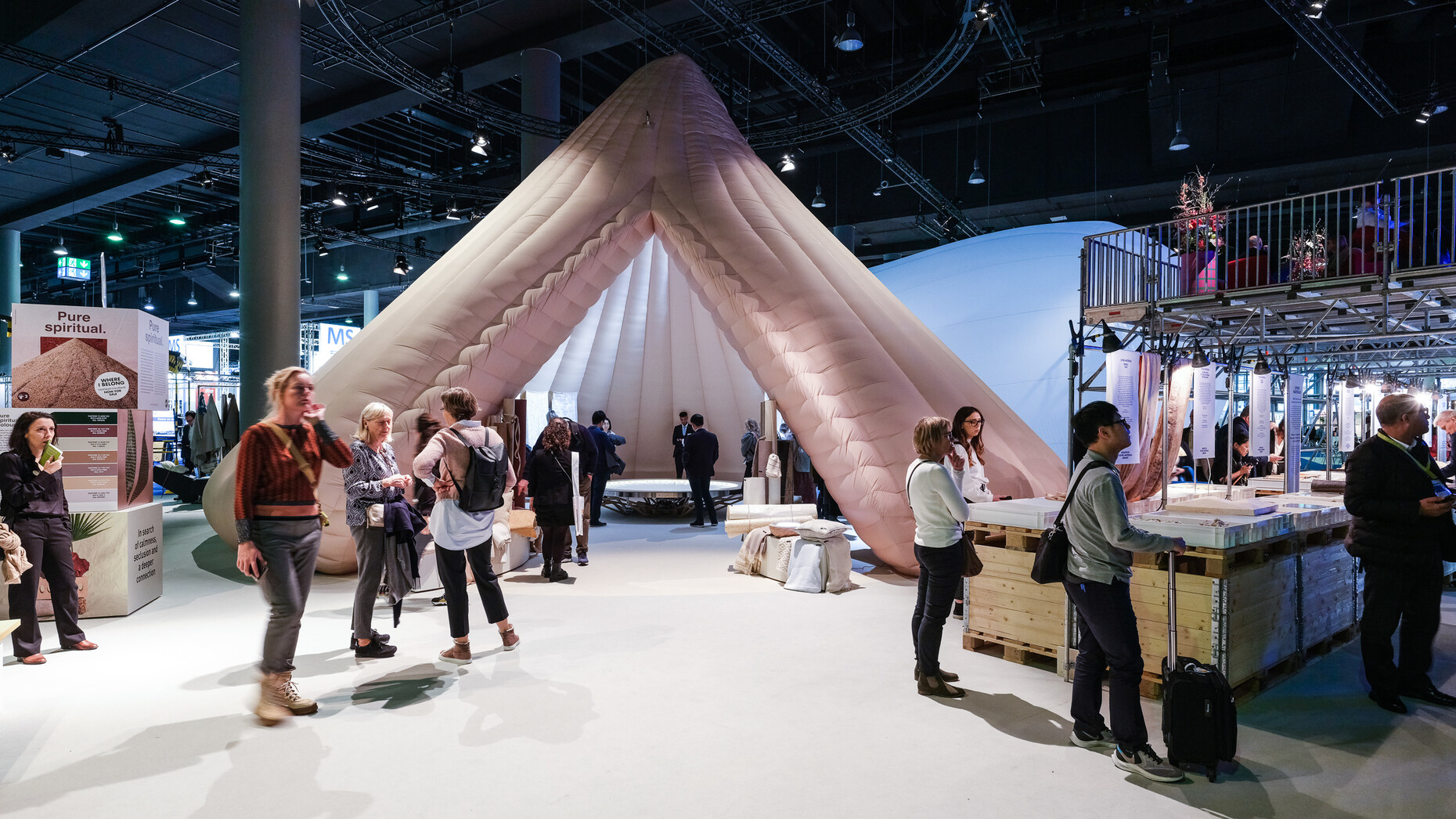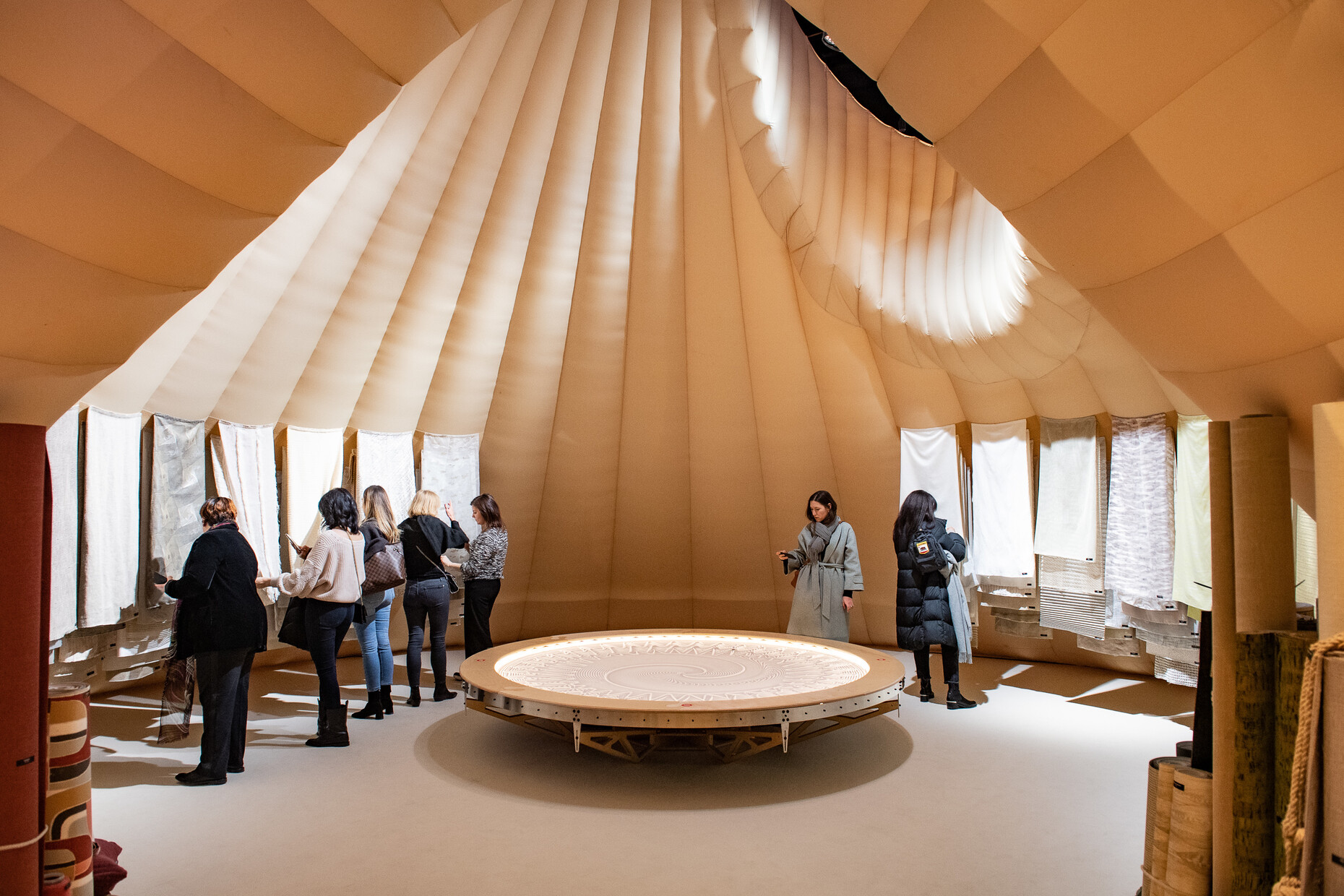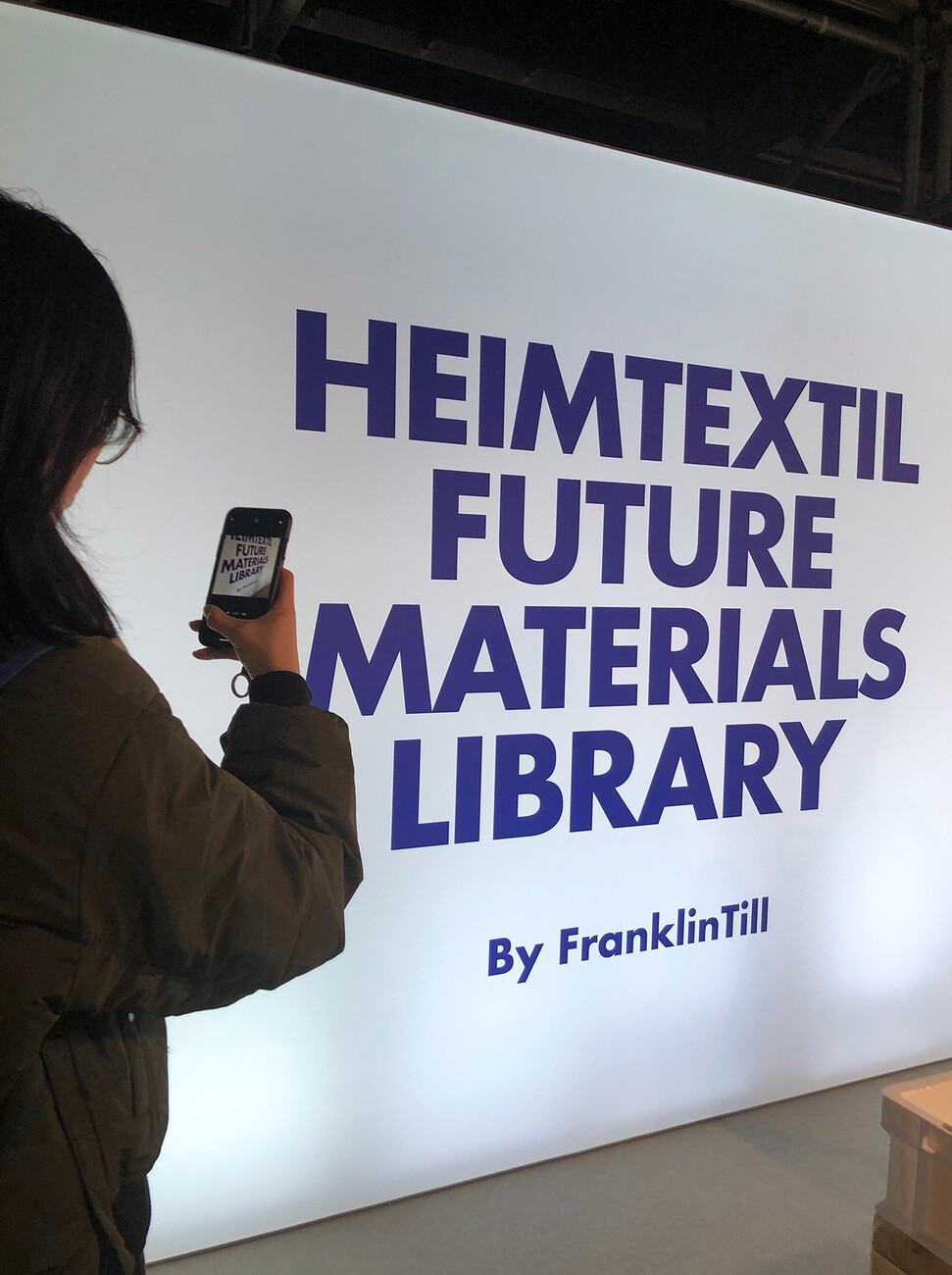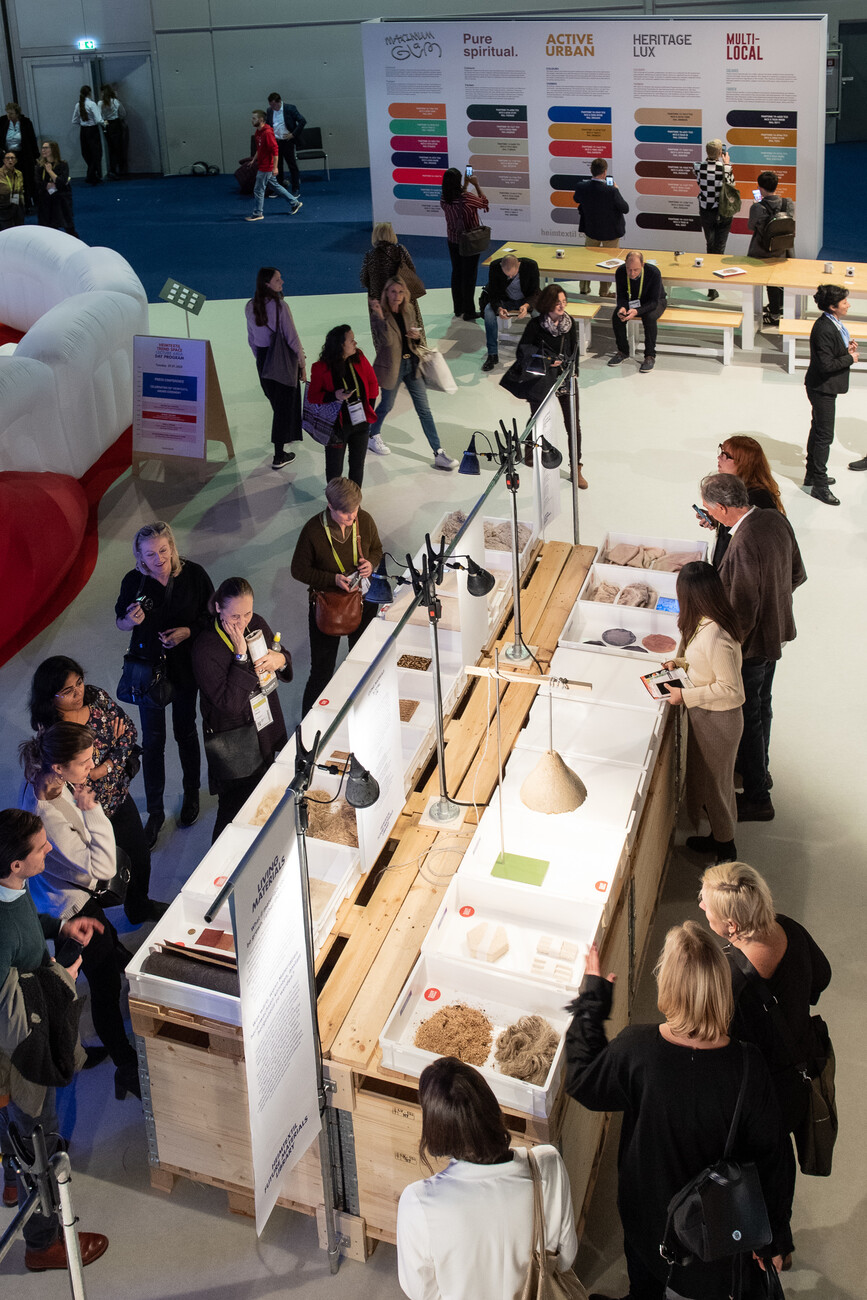Heimtextil 2020
Showtime with gravity
“Where I Belong?” sounds out over the Trend Space of Heimtextil 2020 in Hall 3.0. The voice emerges from the head of a large inflatable white figure with cat’s ears that has nestled comfortably on the rug and receives visitors in a thoughtful pose. Rotating in its face there is a swirl of color, and the vortex reveals a searching eye and a mouth. The latter opens and closes hesitantly in order to pop the question about identity and belonging.
This year Anne Marie Commandeur, Director of the Stijlinstituut Amsterdam, is responsible for the Trend Space at Heimtextil and has appreciably raised the bar for its realization. In collaboration with the Trend Council, the Stijlinstituut identified five trends for the 2020-21season, namely “Maximum Glam”, “Pure Spiritual”, “Active Urban”, “Heritage Lux” and “Multi-Local”. For the presentation, Commandeur chose an interactive space on which vaults of fabric alternate with free areas. “Heritage Lux” and “Pure Spiritual” are embedded in air-filled pavilions: “Heritage Lux” celebrates the fascination with the secretive and mystical, the longing for a renaissance of a rich cultural textile legacy. The columns of an ancient pantheon are printed on the inner walls while at its center flesh-colored swathes of fabric resembling a living cocoon are suspended from the ceiling. The latter extend to the floor enclosing a podium and two chairs. With its mysterious bulges and flowing movements, the fabric brings human tissue to mind. The sides of the vault are fitted out with suitable fabric samples that offer a sense of opulence, attest to surrealist influences, and provide a haptic aspect. In the adjacent dome everything is in harmony: Pastel-colored fabrics are lined up on the walls around a large wooden bowl in which a metal ball draws an artful mandala in the Zen sand line by line. Here, our longing for balance, concentration and spirituality is offered a platform that invites visitors to reconsider natural fabrics and a new mindfulness. Anne Marie Commandeur expresses it succinctly with the words “Less and better”.
The search for identity
On the free spaces around the air-inflated architecture the three dynamic trends “Multi-Local”, “Maximum Glam” and “Active Urban” are presented in sections, each of which is kept separate from the others: A fabric collage of ethnic-looking patterns is combined to create sculptures meters high that tower up like totems. Imaginary banner made up of varying materials refer to the search for a sense of belonging. In front of a wall with international flags visitors can record short greetings that are played back in a loop on a large number of monitors. In this section the question of identity reaches a climax given that it examines to what extent citizenship determines what we are like.
Subsequently, things get glamourous: Large, reflecting spheres are suspended from the ceiling in the area “Maximum Glam”. And the motto is projected on the floor in flowing characters. At the center of the area is a dance pole on which two female acrobats in glittering costumes perform dynamic moves. And the fabric samples here are suitably extravagant: Zebra prints in pink, shiny sequins and bright neon colors are piled up next to and on top of each other. Restraint is not called for here, instead garish patterns and strong colors join forces to form a rebellious union. Dutch designer Bastiaan de Nennie from Phygital Studio demonstrates the current means of surface manipulation in a hands-on manner: Under his guidance visitors are allowed to experiment with the fine plastic filaments of a 3D printing pen. As for the trend area “Active Urban” – well, it truly lives up to its name: Skateboarders can ride on a halfpipe, and visitors can don VR spectacles so as to experience virtual fabrics. Clear, monochrome colors like mustard yellow and royal blue are combined with silver, white, gray and brown tones.
New approaches
Last but not least, the “Heimtextil Future Materials Library” curated by design research agency Franklin Till examines new, sustainable approaches for production and consumer systems. Exhibits in display cases allow visitors to inspect a raw material sample, a specimen from the manufacturing process, and a finished material sample from sustainable manufacturers. The bandwidth of over 1,000 exhibits on environmentally compatible textile manufacturing ranges from methods of recycling waste through to natural alternatives for the resource-friendly fiber production from say pineapple, agave or algae. Moreover, the materials used for the Trend Space were selected for their sustainability – the Stijlinstituut relies on reusable architecture to keep the ecological footprint low.
Anne Marie Commandeur not only wants to entertain people with the Trend Space. Alongside the interactive show visitors are also welcomed by ideas relating to sustainable alternatives to conventional methods of textile production. Her intention is to avoid restricting the presentation to a static exhibition and instead create a memorable experience that evokes emotions and is lasting. And this she has certainly achieved: Trend Space shows a balanced mixture of event and information on global currents, which is funky yet also thoughtful. Also for the opportunity of the reflection is provided, in the Trend Cafe one can let the impressions sink in in a club-like atmosphere.










